Cinema from way back when...
Photos by Carlos Lousada.
The cinemas in Angola are points of reference in the towns where they found a home. And there are many of them. It’s the kind of infrastructure that you find all over the country, because their heyday started way before independence, allowing the Portuguese colonial authorities to take entertainment – but especially regime propaganda – all over the country. What remains for the telling are the architectural lines, the pleasure for shows and multi-purpose spaces.
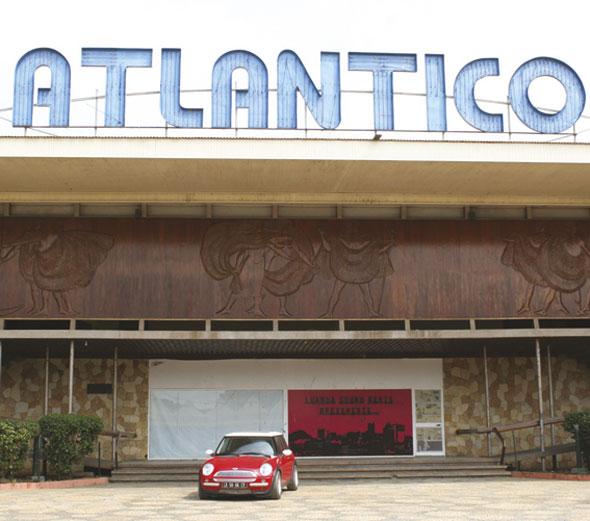
Luanda is the queen when it comes to cinemas: the Miramar, Avis (now Karl Marx), Restauração (where the National Assembly now has its home), Império (now Atlântico), São Paulo, Nacional, Tivoli (Corimba), Tropical, Kipaka, Ngola Cine – a roll call of spaces that were not only used for films (going right back to black and white) but also for musicals and the theatre.
Outside the main urban centre that is Luanda, however, almost all the big towns followed the example and put up their own spaces for entertainment. In Benguela, for instance, the staid old Cine Benguela and later the Cinema Monumental are important historical landmarks for this southern town, as is the Empório in the neighbouring town of Lobito, where later there came the cinema/terrace bars of Lobito and Flamingo.
Spaces like this were springing up in Nova Lisboa (Huambo), Sá da Bandeira (Lubango), Moçâmedes (Namibe), Novo Redondo (Sumbe) and Marechal Carmona (Uíge). They became points of reference, for the films you could see and for other entertainment.
But separation was one of the hallmarks. In the Cine Benguela, for example, there was an area reserved for the local black population, who were not allowed to see all the films put on. On the posters for many films came the explicit wording: “Local black people prohibited” – a situation that was only to disappear after 1961.
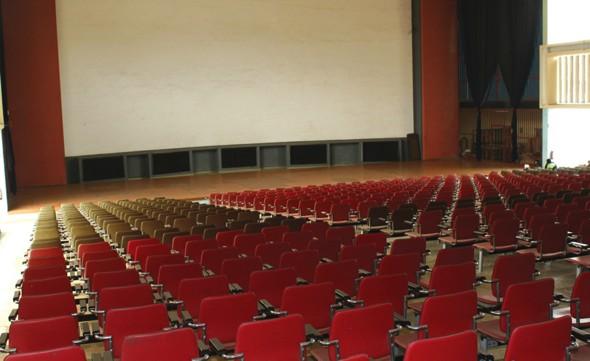
It is important, however, to focus on the way the buildings themselves were conceived. At the start, especially in Luanda and Benguela, they were designed as traditional closed spaces, but in the 60s the cinema/terrace bars became the order of the day, so much better adapted as they were to hot climates.
But the arrival of these cinema/terrace bars was also a way of bringing elegance – even more elegance – to the business of going to the cinema. The Cine Miramar is a good example – it is situated at the top of a hill with a view over the island of Luanda, and the coastal road, the Marginal, is at your feet. Today, paradoxically, the screen is practically abandoned, and just serves as the stage for an occasional concert or entertainment to add to its restaurant and bar service on the terrace.
And this is a scenario that is repeated in Benguela, where the example is the Cine Kalunga – an open-air amphitheatre from the 60s, with chairs laid out in traditional style, surrounded by a beautiful garden. Today, though, only rarely will you find a full-length feature film put on. There is just twirling around, to go with the loud music that comes from youngsters’ parties, fashion shows and the restaurant. But there’s hardly anything to do with the cinema, the so-called seventh art…
There are a few cinemas in Luanda where you can go to see a film, but action films predominate, preferably with characters like Rambo and actors like Jean-Claude Van Damme, in films replete with great fantasy and violent acrobatics. Most of the spectators are young and cinemas in the local neighbourhoods attract big crowds at the weekend, where love stories are also popular.
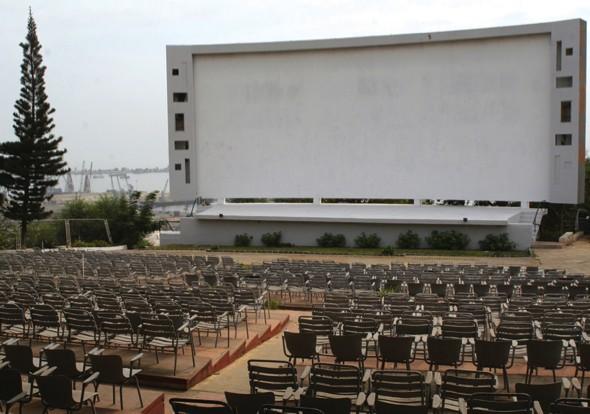
But the love of films is still alive and well in the capital’s suburbs among the young – a new generation who are living out their fantasies and daily frustrations through a wave called “cinema”, put together by amateur producers, with the musical style of Kuduro as a backdrop.
Although the films are technically poor, they have at least brought life back to some circuits, using what are in fact high class facilities, long given over to the ravages of “raves” and kids’ parties.
There are, in fact, new spaces for shows appearing, in an attempt to get over the degradation of the old cinemas and the invasion of new technologies such as videocassettes and DVDs at home. There is the Cineplace Belas Shopping, inaugurated in March 2007. This is a complex with eight cinemas designed on a stadium format with a total of 1,154 seats. It looks as if there is a new era for the cinema coming to Angola.
A bit of history
The film O Caminho-de-ferro de Benguela (The Benguela Railway), directed by Artur Pereira in 1913, is the first recorded short film in Angola. Countless documentaries were produced up to the late 1940s, focusing on the “exotic” nature of the landscapes, habits, ways of life and culture of local people. They also recorded the growth and development of the Portuguese colonial empire in Africa.
Records also show that the first full-length feature film was António Lopes Ribeiro’s 1940 film O Feitiço do Império (The Spell of Empire).
During 1950s and 1960s, there were documentaries produced under the aegis of what were then the Serviço Cartográfico do Exército, the Centro de Informação e Turismo de Angola (CITA), Telecine-Moro and Cinangola Filmes. In 1971 came the documentary Angola, na Guerra e no Progresso (Angola, War and Progress), directed by the Portuguese lieutenant Quirino Simões. This is considered to be the first Portuguese film in 70mm.
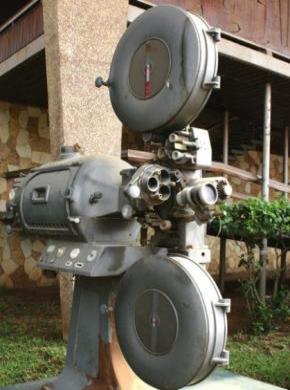
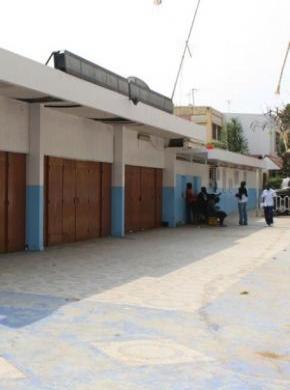
In fact, it was during the colonial war that the biggest number of fiction films were produced, with the anti-colonial guerilla group, the MPLA, also coming up with films like Monangambê (1971) and Sambizanga (1972), directed by Sarah Maldoror. They were inspired by works of Luandino Vieira, though they were only seen in the cinemas after independence.
At the dawn of independence, on 11 November 1975, there were 51 cinemas in the country, with seventeen in Luanda, seven in Benguela, three in Huambo, three in Namibe, three in Uíge, three in Bié, three in Kuanza-Norte, three in Kuanza-sul, two in Huíla, and two in Cabinda, and one for the provinces of Lunda-Sul, Lunda-Norte, Kuando Kubango, Moxico and Zaire.
In the 1940s, Luanda boasted the Nacional (cinema and theatre), along with the no less famous Restauração cinema, where audiences could see famous international artists such as the French singer Charles Aznavour, the Portuguese fado singer Amália Rodrigues, Duo Ouro Negro, from Angola, as well as opera and ballet. But the Restauração was also famous for its variety shows, such as Chá das Seis, presented by Artur Peres and Alice Cruz. And what can you say about the cinema/dance hall Tropical, where you could go and see the weekly musical Caixinha de Surpresas (Box of Surprises)?
The Avis cinema made its debut in the neighbourhood of Alvalade, with the inaugural ceremony starring the little Spanish singer Marisol. The stage here was, however, destined to become more famous with the Miss Angola contests, with the first (in the 1970s) won by the famous Namibe born Riquita, who would later also become Miss Portugal. This was also the decade when the Avis became famous for its production of the musical Hair.
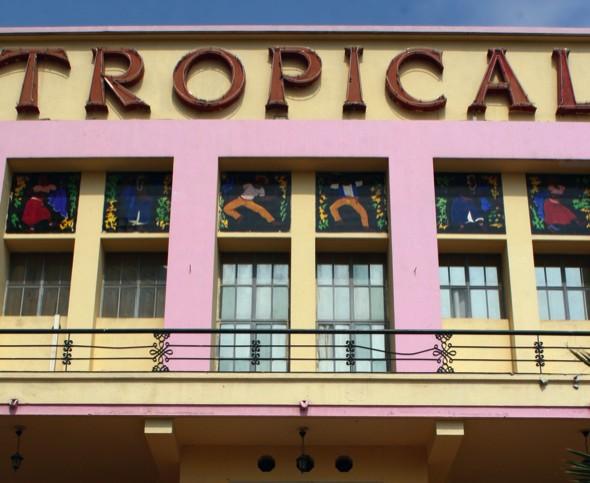
The Miramar cinema revolutionised the field with its 1962 presentation of Cazumbi, directed by Luís Montês. This was also where the Jograis de São Paulo put on shows that have gone down in the cultural history of the country.
The Império was officially opened in 1966 with the premiere in the whole of Portugal of the film My Fair Lady. This cinema became very popular among young people with rock festivals every Saturday afternoon, seen by thousands of spectators.
In terms of the scenic arts, the Teatro Avenida arrived on the Luanda scene in 1968 to join the “aging” Cine-Teatro Nacional, which still exists and is under the responsibility of the Associação Cultural Chá de Caxinde. They still have a programme including theatre and musicals. And we mustn’t forget the two cinemas Cines Alfa 1 and 2, which were also used for children’s television shows.
Meanwhile, outside the places frequented by the Portuguese and the Angolan elite of the time, there was the N’gola Cine which put on weekly cultural shows with Angolan artists, many of whom became famous internationally.
And there were also other places which the local people could afford, among them the Cine Colonial in Luanda. This was in the S. Paulo district, and known by all and sundry as “Clô Clô”. When the place was sold out, you could bring a chair from home, or simply use the floor as a seat.
in AUSTRAL nº 80, article provided by TAAG - Linhas Aéreas de Angola